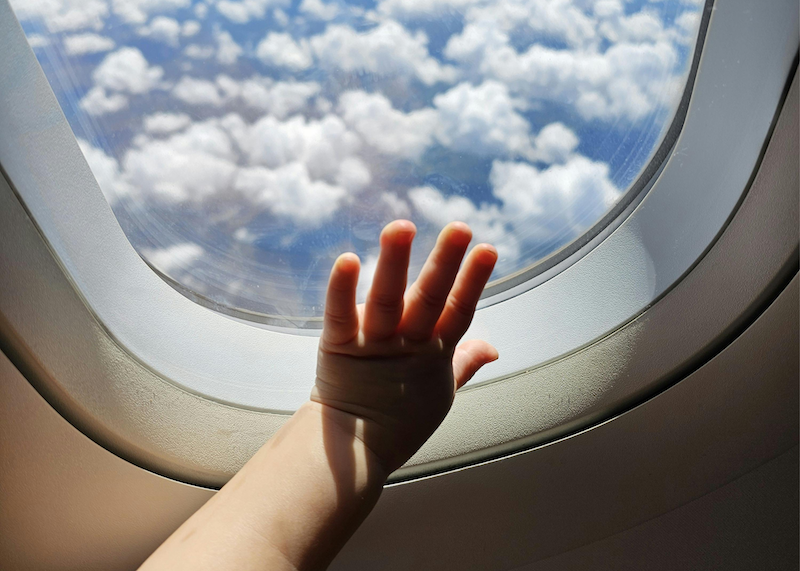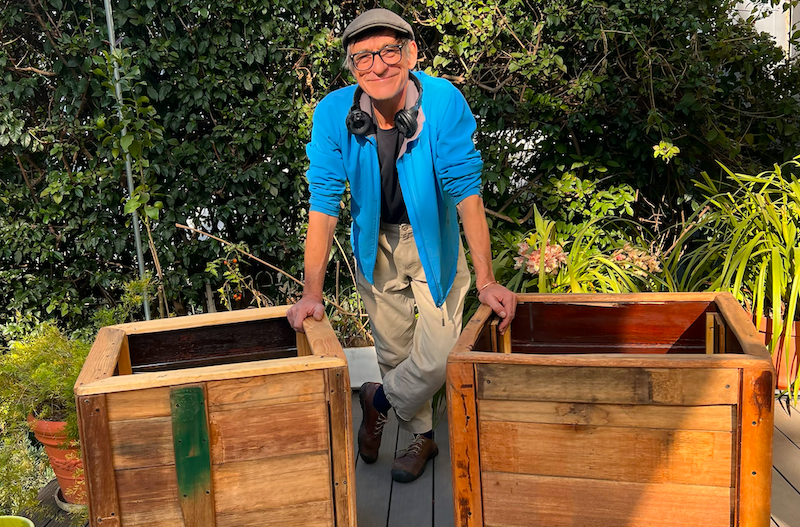With the right planning and prep, flights can be exciting rather than stressful
For many people, catching an aeroplane is exciting. Unfortunately, for many families with children with disabilities, this can be a very stressful time.
My husband is a high-level quadriplegic who uses a power chin-controlled wheelchair, so I understand some of the challenges, especially as we often travel with our young children. This month we provide some practical tips on what we can do to ensure that both you and your child have a positive flying experience.
Inform the airline when booking
If your child is a wheelchair user or requires additional assistance with getting on and off the plane, airlines require that you complete a form.
Most airlines finally have online forms that you can complete and submit. Some airlines call it a “Special Medical Needs Request Form”. This needs to be done when you book or as soon as possible afterwards as some airlines have a quota on the number of passengers with disabilities that they allow per flight.
If you are travelling with a power wheelchair, be sure to include information about the batteries (i.e. dry cell) and that you will do the disconnecting (you don’t want staff damaging the battery), chair weight and measurements.
Temporary wheelchair
You are often required to navigate long distances from check-in, through security, passport control (if travelling internationally), through to your boarding gates with long queues. If your child is not a wheelchair user, but is easily fatigued or has mobility impairments, consider requesting a wheelchair as this often makes getting through security easier and faster.
You will need to request a wheelchair as least 48 hours prior to flying and the airline will ensure that you are provided with a wheelchair from the check-in counter to the boarding gate, and from the aircraft to the arrivals hall at your destination.
Before you fly
Don’t forget to prepare your child for what they will see, hear and what will happen. Airports can be extremely busy and stressful and the more prepared they are, the better. Some children benefit from noise cancelling headphones, or sunglasses to shield some of the bright lights and bustling (and stares from other passengers).
Ensure you pack a range of clothes while travelling. Some areas of airports can be very cold (especially the passenger aid unit), and sometimes planes can be very warm. Be prepared!
Sometimes packing a familiar comfort item such as a soft toy or blanket can help reduce anxiety. Just remember to make sure you don’t lose it! Consider tying it to your child’s wheelchair in case it gets dropped.
Ensure that your child remains hydrated, especially on long flights. Taking along snacks is also a good distraction, especially if there are delays.
Be early and checking in
I recommend always getting to the airport at least two and a half hours early in case there are any parking challenges or overlooked things that take time. You don’t want to be rushed.
If you have completed the documentation requiring special assistance, you will not be able to collect your tickets from the online kiosks even if you do not have any check in luggage.
When you get to the airline counter, they will issue you with your boarding pass and tag your wheelchair. If you have a mobility device, such as a walker or other mobility aids, to be stored in the hold once you board, they will tag those too.
Passenger assistance
After you have checked in, the airline will normally arrange for a staff member to either push or accompany you and your child through security and to the boarding gate.
Depending on where your plane is parked, you will either use the skybridge (the tunnel from the airport straight to the door of the plane) or use the passenger assistance unit (PAU) – a small truck will drive you to the door of the plane. There will be a lift with fall protection and guardrails.
If your child is able to walk with support, they can leave their wheelchair or mobility device in the PAU and move to their seats (normally through the rear plane door). If they are unable to walk, they should be provided with a “slipper chair” – a narrow foldable wheelchair that can move down the narrow isle and then will be assisted onto their seat.
My husband is not able to use a slipper chair as he doesn’t have the ability to hold his torso and will tip over. Our carer has to carry him from the PAU to his seat, which is why we always like to board first for dignity, but also practical purposes. There is less chance of a passenger getting an accidentally spasm kick to the head!
I suggest folding your child’s wheelchair for the crew or showing them how to fold it as so many chairs fold differently. You can’t risk the chair getting damaged.
With a power wheelchair, disconnect the battery and tuck away the wires to minimise the risk of damage. I always take as many items off the wheelchair as possible, such as the removable head rests or chin controls, and push in any moving parts such as footrests.
Remember if your child needs to sit on their pressure cushion, it is much easier to put this on their seat before moving them. Also remember to pull the safety waistbelt out of the way and to extend it as your child may be seated higher due to the cushion.
I really encourage you to befriend the crew, both those working on the plane and the support staff. The kinder you are, the better they will listen and do what is best for your child. Every passenger is different, and you really need have them on your side.
It is essential that you communicate the importance of returning the wheelchair to the door of the plane with both the PAU staff and cabin crew otherwise you will not be able to disembark.
The amount of times communication challenges has resulted in my husband’s chair being sent to the terminal and him being stranded on the plane are staggering! Be firm and kind and take control. Normally, reminding them that this could delay the next flight helps.
More to keep in mind
It is also important to note that your child is entitled to one mobility aid, such as a wheelchair, crane or crutches, free of charge in addition to their standard baggage allowance.
Your child may not be seated near an Emergency Exit (the entire row). So, be aware of this when booking seats, especially when travelling with family or friends.
If you are flying internationally, take copies of the prescriptions for all medication, especially scheduled medication, as you’ll most likely be searched.
Make sure to keep medication in your hand luggage as the last thing you need is for your bags to go missing and you not having your child’s medication.
Ensure that any liquid you may need (for example, hand sanitiser) is stored in 100-millilitre clear bottles. We often buy cheap plastic bottles and decant what we need.
We had a big fight with security on a flight to the United Kingdom as my husband’s moisturiser, which is needed to massage and prevent pressure sores, was in a 200-millilitre tub.
The more prepared you and your child are, the better things will be. Be assertive and ensure that you have multiple plans if plan A and B doesn’t work out. Happy flying!







